Everything You Want To Know About Scallops
Scallops are a true seafood delicacy, known for their sweet, tender meat and versatility in the kitchen.
Whether you’re preparing an elegant dinner or a quick weeknight meal, scallops deliver impressive flavor and texture with minimal effort. They pair beautifully with a variety of ingredients, making them a favorite for home cooks and chefs alike.
There are two main types of scallops: sea scallops and bay scallops. Sea scallops are larger and meatier, ideal for searing or grilling. Bay scallops, on the other hand, are smaller and sweeter, perfect for light dishes like pasta or salads. Knowing the difference will help you select the right scallop for your recipe.
When buying scallops, freshness is vital. Look for dry-packed scallops, free of added water or chemicals, with a firm texture and a fresh, ocean-like scent. Once home, store them in the refrigerator and cook within a day or two. For longer storage, freezing is an excellent option.
Cooking scallops is simple and fast. A quick sear, a buttery sauce, or a touch of citrus transforms them into a restaurant-quality dish. Ready to learn everything about scallops? Let’s explore how to choose, store, and cook these delightful morsels.
What Are Scallops?
Scallops are a true seafood delicacy, known for their sweet, tender meat and versatility in the kitchen. Whether you’re preparing an elegant dinner or a quick weeknight meal, scallops deliver impressive flavor and texture with minimal effort. They pair beautifully with various ingredients, making them a favorite for home cooks and chefs alike.
There are two main types of scallops: sea scallops and bay scallops. Sea scallops are larger and meatier, ideal for searing or grilling. Bay scallops, on the other hand, are smaller and sweeter, perfect for light dishes like pasta or salads. Knowing the difference will help you select the right scallop for your recipe.
When buying, freshness is key. Look for dry-packed scallops, free of added water or chemicals, with a firm texture and a fresh, ocean-like scent. Once home, store them in the refrigerator and cook within a day or two. For more extended storage, freezing is an excellent option.
Cooking scallops is simple and fast. A quick sear, a buttery sauce, or a touch of citrus transforms them into a restaurant-quality dish. Ready to learn everything about scallops? Let’s explore how to choose, store, and cook these delightful morsels.
Characteristics of Scallops
Scallop Type | Shape | Size (Diameter) | Color | Sustainability | Taste Description | Texture Description |
| Atlantic Sea Scallop | Round, slightly ridged | 3-5 inches | Cream to light beige | Moderate to good | Sweet, mild, slightly briny | Firm, tender |
| Bay Scallop | Smaller, round | 1-2 inches | White to pale pink | Generally sustainable | Sweet and delicate | Soft, tender |
| Calico Scallop | Round, smooth shell | 2-3 inches | White with brownish spots | Less studied, localized | Mild, slightly nutty | Firm, slightly chewy |
| Japanese Scallop | Fan-shaped, ridged | 3-6 inches | White to pinkish | Varies by fishery | Sweet, clean flavor | Firm, juicy |
| King Scallop (Pecten maximus) | Round, deeply ridged | 4-6 inches | White to pale orange | Good, some fisheries certified | Rich, sweet, more intense | Firm, meaty |
| Bay Scallop (Argopecten irradians) | Round, smooth | 1-2 inches | White or light pink | Sustainable in many regions | Delicate, sweet | Very tender |
Cooking
Technique | Description | Dishes | Wine Pairing |
| Searing | Cooking scallops quickly over high heat in a hot pan with oil or butter, forming a golden crust. | Seared scallops with lemon butter sauce; Seared scallops with pea purée | Chardonnay, Sauvignon Blanc |
| Grilling | Cooking scallops on a grill or grill pan, often on skewers to prevent falling through grates. | Grilled scallops with citrus glaze; Scallop skewers with herb marinade | Albariño, Vermentino |
| Broiling | Cooking scallops under high direct heat in the oven, achieving a caramelized exterior. | Broiled scallops with garlic butter; Broiled scallops au gratin | Pinot Grigio, Chablis |
| Baking | Cooking scallops in the oven, often in a sauce or with breadcrumbs for gentle, even heat. | Baked scallops with Parmesan crumbs; Scallop casserole | White Burgundy, Viognier |
| Poaching | Gently simmering scallops in flavorful liquid such as broth, wine, or cream. | Poached scallops in saffron broth; Scallop chowder | Champagne, Chenin Blanc |
| Ceviche | “Cooking” scallops in acidic citrus juice without heat, for a fresh, tender texture. | Scallop ceviche with lime and cilantro; Scallop crudo | Dry Riesling, Sparkling Rosé |
| Stir-frying | Quickly cooking scallops in a wok or pan with oil and vegetables, using high heat. | Stir-fried scallops with ginger and scallions; Scallops in black bean sauce | Gewürztraminer, Grüner Veltliner |
| Steaming | Cooking scallops gently with steam to preserve delicate texture and moisture. | Steamed scallops with garlic and soy; Dim sum-style scallops | Dry Muscat, Pinot Blanc |

Day Boat, Regular & STP
Day boat scallops are harvested by fishing boats that return to shore the same day. Because they’re processed and sold within hours of being caught, day boat scallops offer superior freshness, flavor, and texture.
In contrast, regular scallops (often called “trip boat” scallops) are caught during multi-day trips. These scallops may sit on ice for several days before reaching the market, affecting their quality.
Day boat scallops tend to be “dry,” meaning they haven’t been treated with preservatives or moisture-retaining solutions like sodium tripolyphosphate (STP). Regular scallops are often treated to extend shelf life and boost weight, which can lead to a waterlogged texture and diluted flavor.
When you want the purest taste of the sea, day boat scallops are the premium choice.
Sea and bay scallops are highly perishable because, unlike other mollusks, they can’t clamp themselves shut once caught. Fishermen typically kill scallops right after harvesting.
Some go straight into freezing, while others return to shore as prized “day boat scallops”—some of the freshest (and priciest) you can buy.
Because scallops spoil quickly and it’s costly to send out boats for single-day trips, some fishermen treat scallops with a solution of sodium tripolyphosphate (STP). When used properly before freezing, STP helps scallops retain moisture and prevents them from drying out.
However, excessive use of STP causes scallops to absorb too much water—sometimes up to 50% of their weight. Since scallops are sold by weight, this unnecessary moisture inflates the price and diminishes quality.
Dry Scallops Shrink Less
If you plan to prepare a dish using a dry-heat cooking method, such as sautéing or searing, you will be better off purchasing dry-pack scallops. As you can imagine, a wet pack scallop is more apt to steam in all of that excess water and overcook long before it caramelizes.
And the wet scallops shrink when you cook them almost 40%, whereas the dry scallops do not. So you may be paying more for the dry scallops, but by the time you cook them, you may be saving.
If you are making a dish where the scallop is a supporting player or are using a moist heat cooking method like a fish stew or chowder, you will probably be fine using wet-pack scallops. However, it is a personal decision that you will have to make based on your budget and your feelings about food additives.
How Are They Harvested?
Scallops are harvested in one of two ways: trawling or by diving. Trawling is done by scraping the ocean floor and pulling it up (and whatever else is down there) without regard to maturity or the damage possibly being done to the ocean floor.
A more environmentally friendly, albeit expensive, harvest method is for a diver to give us “diver scallops.” A diver scallop is not another species of scallop, nor does it designate in size. Instead, it describes how the scallops were harvested.
Divers go down and choose mature scallops by hand, leaving behind immature scallops and the ocean floor alone. Since the divers do not disturb the ocean floor, diver scallops are usually less gritty than those harvested by bottom trawls.
Buying The Best You Can Afford
If you are concerned about purchasing them treated with STP, look for “dry pack” scallops. Dry-pack scallops are packaged without any additives. However, by law, STP-treated scallops must be sold as “wet-pack.”
It is easy to tell the difference between dry-pack and wet-pack scallops. While the natural muscle color is generally ivory to beige, and the texture can be slightly sticky, scallops treated with STP are bright white and very wet.
How Are Scallops Sold?
Like shrimp, scallops are sold by count per pound. For example, sea scallops might be marked at 10/20, meaning that between 10 and 20 scallops are in each pound. This translates to scallops that weigh somewhere between .8 to 1.6 ounces each. The higher the numbers, the smaller the scallops.
Of course, larger sea scallops tend to be the most expensive. So, another weight designation you might see is U/10 or U/15. This means it takes fewer than or under 10 (or 15) to make up a pound.
Here again, the larger the U number, the smaller the scallop. Bay scallops generally fall in the 70/120 range, being smaller than sea scallops. This roughly equates to between 4 to 9-10 bay scallops per ounce.
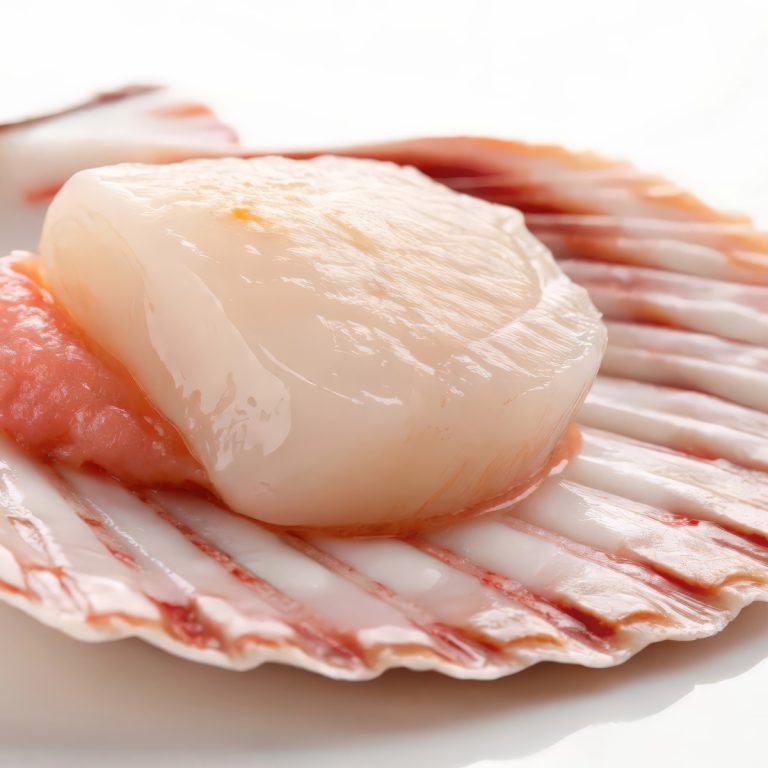
Buying & Storing Tips
Tip | Tip Description |
| Buying Tip | Look for scallops labeled “dry-packed” or “dry”—these have not been treated with added water or preservatives. |
| Buying Tip | Choose scallops with a fresh, sweet, briny smell. They should not smell fishy or sour. |
| Buying Tip | The surface should be firm, slightly moist—not mushy or slimy. |
| Buying Tip | Avoid scallops that appear overly white and shiny—this can indicate STP treatment. Dry scallops have a natural creamy beige to ivory color. |
| Buying Tip | If buying frozen scallops, choose those labeled “IQF” (individually quick frozen) for better quality. |
| Buying Tip | Ask your fishmonger how recently the scallops were harvested, especially when buying “day boat” scallops. |
| Buying Tip | For consistency in cooking, buy scallops of similar size. U-10 or U-15 sea scallops are excellent for searing. |
| Storing Tip | Store fresh scallops in the coldest part of your refrigerator (usually the back of the bottom shelf). |
| Storing Tip | Place scallops in a shallow dish lined with paper towels, cover loosely with more paper towels or wax paper. |
| Storing Tip | Use fresh scallops within 1 to 2 days of purchase for best flavor and texture. |
| Storing Tip | If freezing, wrap scallops tightly in plastic wrap, then place in a freezer-safe bag or airtight container. Use within 2-3 months. |
| Storing Tip | Do not refreeze previously frozen scallops—quality will suffer. |
| Storing Tip | Thaw frozen scallops overnight in the refrigerator. For quicker thawing, place them in a sealed bag and submerge in cold water, changing the water every 30 minutes. |
| Storing Tip | Never thaw scallops at room temperature, as this encourages bacterial growth. |
What About Frozen?
If you purchase frozen scallops, they will keep in the freezer for up to three months. After that, thaw them in the bag in the refrigerator overnight. Again, do not thaw them out on the counter due to spoilage issues.
Do not use the microwave if you are in a pinch and have to thaw your scallops quickly. Instead, run the frozen scallops in the bag under a stream of cold water in the sink until thawed
What’s In A Name?
As with many delicacies, many stories and traditions have grown up around the scallop. You may have heard the term “Coquille de St. Jacques.”
While this is a classic scallop preparation, it also translates to “St. James’ shell.” St. James the Greater was a disciple of Jesus and is the Patron Saint of Spain.
Pilgrims traveling to his shrine carried a scallop shell to signify they were making a pilgrimage. At stops along the way on his pilgrimage, the pilgrim was offered what food he could scoop up in his shell.
The scallop shell is symmetrical and quite beautiful. It is often found in motifs, both decorative and religious. At some time, the scallop shell was linked with fertility, often appearing in classical art and images of beautiful and desirable women. A notable example of this is Boticelli’s The Birth Of Venus.


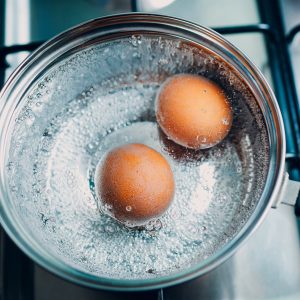
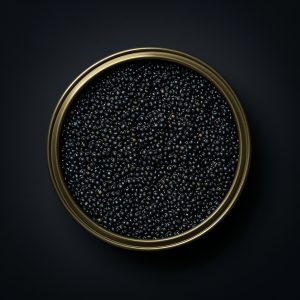

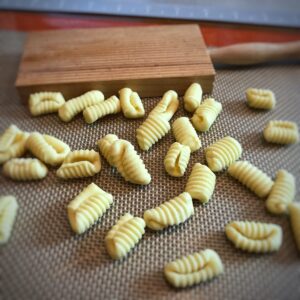
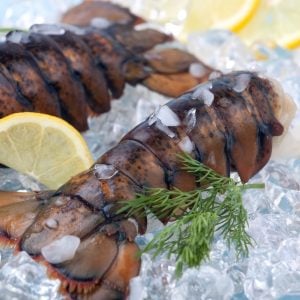
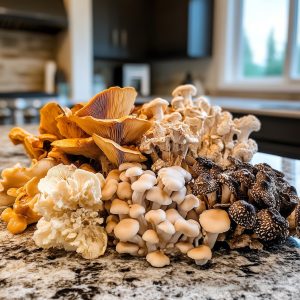
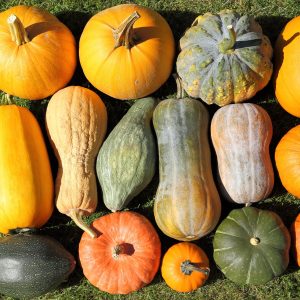
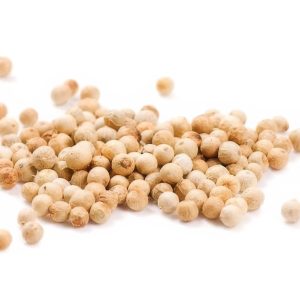
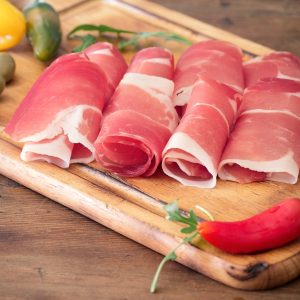


32 Responses
great blog with lots of helpful info about the ingredients, tom
Thanks Tom – RG
very interesting and informative
Best information I ever read..great details…I’ll have to try the recipes…
Thanks Sean – RG
I hate to hear you are the reluctant gourmet when you have published such a fantastic article on scallops. Really informative and objective–allowing the reader to make informed decisions on the food choice. You also present the material in a simple, concise, easy-to-read way. The only information I missed is that I would have liked more written about techniques like how do you get a proper sear, should you season scallops before or after cooking, how you can tell it is done. I read that we are to not take our eyes off the scallops, but what am I to look or feel for to know that it is cooked properly. Your article was so informative that, for the novice cook, it would have been perfect to have a little bit more information on techniques. Thanks. Already book marked you.
Hi Miss Emerson, thanks for the comment and you are right. I talk about everything scallops except how to cook them. I’ll work on a post and link to it from here. Thanks for pointing this out. – RG
Thanks for all the info. One thing you didn’t mention that has given me fits is the taste of scallops treated with STP. I guess not everyone is able to taste it, but to me the flavor is so bad that I can’t even force myself to eat treated ones. In fact, I almost gave up on scallops entirely before finding out about the difference between dry and treated ones…now I just have trouble finding the dry ones (or even people that know, and/or packaging that’s obvious), but Sprouts usually has them and sometimes the local Asian market may. Wouldn’t even know where to find a fish monger though…wonder how common they actually are to most areas?
Hi Diane, you must have very strong taste buds or a sensitivity to sodium tripolyphosphate (STP). I have never noticed the taste or has it stopped me from eating scallops although I do notice how much scallops treated with STP shrink when cooking. The problem for most of us, like you, finding dry or day boat scallops is not easy. I would guess over 90% of the scallops we eat at home and in restaurants are not dry scallops so it’s important to find good sources in your area. And then when you do find them, you might be shocked by the cost. Here in the Philly suburbs I know of 6 or 7 good fish stores and am starting to see dry scallops show up at many of the supermarkets. If your supermarket doesn’t carry dry scallops, try asking them to order them for you. – RG
and, just for the fun of it, I’ll add that scallops have eyes—a row of them that can sometimes let them evade the drag of a scallop boat.
Interesting image! – RG
Very informative article in all respects, thanks. Do you know if it’s possible to buy scallops with the orange tail (roe) still on in North America? This is the way I’m used to purchasing them in the UK but can’t find them anywhere here…..It’s just a presentation idea…
Hi Martin, I have never seen or heard of buying scallops with orange roe attached but maybe one of my readers has seen them available. – RG
what does “dry boat’ Scallops mean? Is it the same as dry pack?
I have never heard of the expression “dry boat” but instead “day boat” which means the scallops were caught and brought to market that same day rather than after a couple days at sea. “Dry pack” scallops can be purchased fresh, frozen or as I see them in my market, in large sealed cans but they are not soaked in that milky liquid containing the preservative phosphate STP. “Wet packed” scallops are shipped and stored in a liquid containing STP as a preservative. – RG
Excellent article. When you do the article on how to cook scallops, can you also go over how to clean the grit from dry pack scallops?
I agree with Diane. I cannot eat wet pack scallops because they have a funky taste from the chemicals that are used. I gave up on scallops for that reason until I heard about the dry pack scallops. They twice the price as wet pack but in my view, well worth it. It’s a treat for us several times a year!
Thanks!
I have a recipe that calls for bay scallops, which I couldn’t find. I bought the larger sea scallops instead. Do I just cut them up into smaller pieces to use in the recipe? How big are bay scallops anyway? Thanks!
Hi Celia, I guess you can but why would you. You pay a lot more for the sea scallops so why not use them whole and adjust your recipe. Hard to tell exactly without seeing the recipe but yes you could cut them into quarters if need be. Bay scallops are about 1/2 inch in size and come approximately 40 to 60 per pound but can be as small as 90 per pound. Sea scallops come about 10 to 40 per pound. – RG
I am a cook student. I can’t find the answer. Could you let me know what is the best answer. Which size scallop for a coquille St. Jacques?
a. 10 count
b. 30-40 count
c. 40-60 count
d. 60-80 count
Victoria, most of the recipes I see call for bay scallops which are the smaller sizer but I have also seen recipes that just say “bite” size and that if you only have larger scallops, you can cut them up into smaller pieces.
Anyone else have some expert advice for Victoria?
I would use 60-80 size scallops or even smaller. My employer produces Coquille St. Jaques and we use close to an 80-120 size sometimes even 120-150. Hope this helps!
d. 60-80 count, although I prefer a 40-60 count. Usually, they are 70-120 count.
RG: You didn’t comment about fake scallops. Unscrupulous sellers are now using skate as a fake scallops and charging a lot of money. The fake scallops are readily recognized by the experienced cook as they are all the same size, whiter than they should be, and don’t have the irregular splits in the outer area.
Sea scallops are also known by other names: jumbo scallops, giant scallops, great scallops, king scallops and Alaskan scallops. Most scallops are harvested by net but “diver scallops” are picked individually by divers. It says nothing about their size. Many individuals consider them more environmentally friendly as divers usually pick the largest (and oldest). The usual count is 10-40.
Good points Robert and an interesting topic for another article but if you get to know your fishmonger well, I don’t think you will have to worry about fake scallops. Have you ever come across fake scallops? If so, what type of store were you buying them in? Small, large, local, etc. – RG
Your article about scallops is really great.
I have one question about storage. After scallops are purchased, can they be cleaned (from the shell, muscle and coral), then slightly sprinkled with olive oil and stored in the container in the fridge for 1-2 days?
Thank you very much for your response in advance!
Hi I am trying to be a supplier of scallops in Cebu, Philippines but i do not have any idea on how to pack them right. Any advice?
I do not Phil. A little bit out of my league.
A personal comment about STP and seafood/fish; upon defrosting the seafood or fish, especially fish, I find that the meat turns mushy. The cellular structure of the meat has been broken apart and the excess water leaches out leaving behind an undesirable product. That is my best estimation of what I have experienced. I will pay extra money for seafood not treated with STP and have been rewarded in kind with a quality product when I eat it up!
I really found this web report interesting and it was fun to read and share while dining on sea scallops.
Just discovered this site after using one of your recipes I found on Pinterest. Very informative and helpful. I look forward to exploring further.
After cooking scallops, how long can I keep them in the refrigerator before they are no longer safe to eat ?
Not sure of any official amount of time and I’m guessing it depends on factors such as how old were the scallops before cooking, how well were they kept, and how well done were they cooked. Saying that, here is a site that might be useful – StillTasty
thank you for this article very informative. Very helpful. I like to buy scallops wet packed in the 8 pound bucket. I remove just enough for service the day of and the rest I leave in the bucket. This helps preserve a very expensive purchase for a lot more than the two or three days the scallops would last if I dried them out and stored them in the multi container system.
Last night I went out to eat at an expensive seafood restaurant. I got a dish with three very large sea scallops. The scallops were seared and as has happened before, the scallops seemed raw. I am an older individual and while not an expert on scallops, have had them a number of times through my life. Lately, however, it seems they have not been cooked as much as I am used to and I am losing my love of them. They seem almost raw and the taste is lost. Is this something that is happening more in our time period, or am I just crazy?
I’m sure you are not crazy Linda. I have read if scallops are “healthy”, they can be eaten raw. Saying that, like you, I’m not a big fan of under cooked scallops. The question you have to ask yourself and the waiter is if this is how the chef wanted them prepared or did they get under cooked by mistake. If this is how the chef likes to prepare them, you can always send them back and ask them to cook them a little more. I’m sure you are paying a good price for the scallops, so they should prepare them how you like them. Don’t be afraid to ask for what you want. You are the customer. Also, if you enjoy eating out and like to order scallops, I would recommend you ask the waiter how they are prepared while he or she is taking your order. At this time you can tell them how you would like them cooked just like you would when you order a steak. We are talking about an extra minute or two of cooking time. No big deal.
Thank you for new information… I love it when I can learn something new!
How do frozen scallops compare to fresh scallops for quality and taste . are scallops frozen at sea better than fresh scallops landed 2/3 days later ?
Hi Dave, great questions. I think if you can buy fresh scallops right off the boat, they are always going to be better than frozen. Saying that, I’m not sure most scallops you buy at the market are not frozen scallops that are thawed out like almost all shrimp are. I’ll ask my fishmonger about this and post when I get an answer. I have read that any seafood frozen at sea is better than a three day back and then frozen. It makes sense to me that if you freeze it at sea there is no time for degradation. I’ll ask about this too.
I love dry sea scallops, U15 is what I usually purchase, they come frozen unless I travel to Glen Burnie, Md where the seafood strip is located, they have fresh dry scallops. They are defrosted and dried in refrigerator, dusted with baking powder before searing them with mixture of butter and olive oil. The baking powder makes them crispy because of alkalinity. While they are being seared for a couple minutes, I also add shallot to fry in the butter oil mixture. Then I scoop them aside, baby spinach or baby arugula, toss them in the frying pan where the scallops were cooked, adding extra EVOO as needed, which takes a couple minutes, lots and lots of freshly grated Parmesan cheese.
dish the greens and top it with scallops, the fried shallot squeeze lime or lemon
STP makes the scalp water logged, will not brown as well .
Dusting with baking powder makes them crisp without overcooking,
I love scallops,I make my stepdad seafood Alfredo. he loves it.However bay scallops are twice as as much sweetness than sea scallops.I had them at a restaurant last night,and i was disappointed with the sea scallops. if you all love the sweetness as much as i do, buy the bay.And they cooking minutes.
Thanks for sharing such useful information. I have a question: I have never purchased bay scallops, but I plan to prepare a dish (Scallops & Leeks in Cream) that calls for bay scallops. I prepared this dish many, many years ago & used sea scallops, but I’m considering trying the bay scallops. Your thoughts?
Sounds good. Not sure what you are asking but it sounds like a good recipe.
1. I lived in Australia for 11 years, I never saw scallops offered, cooked or served without the orange portion attached which was always delicious. Why is this removed in the USA?
2. On moving to the USA I read a US govt. publication on sea food. It clearly stated that any scallops labeled as Deep Sea Scallops, are in fact punched out pieces of sting ray or skate. How does one identify which is real scallop?
Hi John, The orange portion is from female scallops and “is known as the coral and the roe or milt sacs” and yes, it has more actual flavor than the scallop itself. This coral is often removed for sale. It is also removed because this roe is particular delicate and “softens when frozen, so possessor remove it before freezing”. Another reason I have heard for removing the roe is for appearance. I read that plated scallops are “aesthetically more appealing without its reproductive organs hanging out to one side.”
I am not aware of any US Govt. publication stating scallops punched out of pieces of skate can be labeled as scallops. In fact, I believe it is illegal.